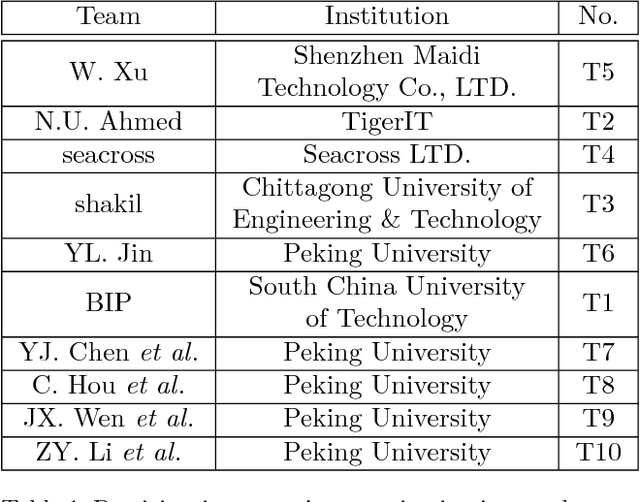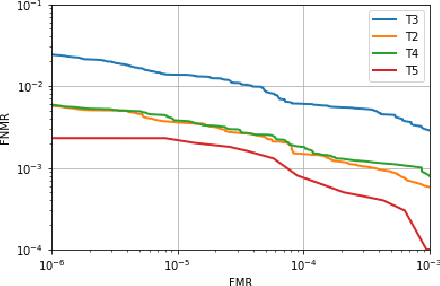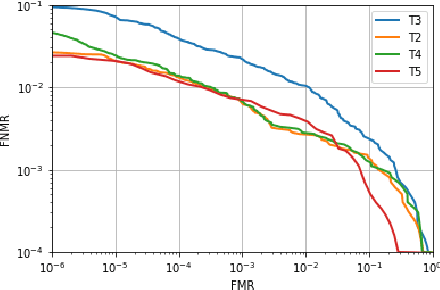Md. Shakil Ahmed
A Bidirectional Siamese Recurrent Neural Network for Accurate Gait Recognition Using Body Landmarks
Dec 05, 2024Abstract:Gait recognition is a significant biometric technique for person identification, particularly in scenarios where other physiological biometrics are impractical or ineffective. In this paper, we address the challenges associated with gait recognition and present a novel approach to improve its accuracy and reliability. The proposed method leverages advanced techniques, including sequential gait landmarks obtained through the Mediapipe pose estimation model, Procrustes analysis for alignment, and a Siamese biGRU-dualStack Neural Network architecture for capturing temporal dependencies. Extensive experiments were conducted on large-scale cross-view datasets to demonstrate the effectiveness of the approach, achieving high recognition accuracy compared to other models. The model demonstrated accuracies of 95.7%, 94.44%, 87.71%, and 86.6% on CASIA-B, SZU RGB-D, OU-MVLP, and Gait3D datasets respectively. The results highlight the potential applications of the proposed method in various practical domains, indicating its significant contribution to the field of gait recognition.
ICFVR 2017: 3rd International Competition on Finger Vein Recognition
Jan 04, 2018



Abstract:In recent years, finger vein recognition has become an important sub-field in biometrics and been applied to real-world applications. The development of finger vein recognition algorithms heavily depends on large-scale real-world data sets. In order to motivate research on finger vein recognition, we released the largest finger vein data set up to now and hold finger vein recognition competitions based on our data set every year. In 2017, International Competition on Finger Vein Recognition(ICFVR) is held jointly with IJCB 2017. 11 teams registered and 10 of them joined the final evaluation. The winner of this year dramatically improved the EER from 2.64% to 0.483% compared to the winner of last year. In this paper, we introduce the process and results of ICFVR 2017 and give insights on development of state-of-art finger vein recognition algorithms.
 Add to Chrome
Add to Chrome Add to Firefox
Add to Firefox Add to Edge
Add to Edge